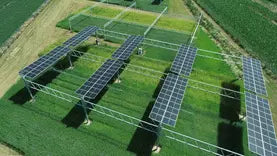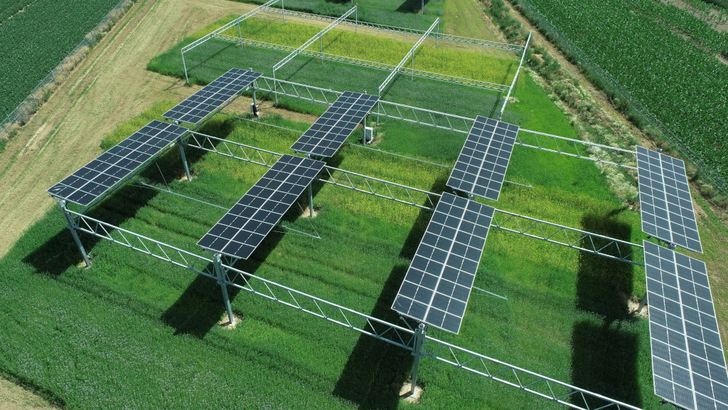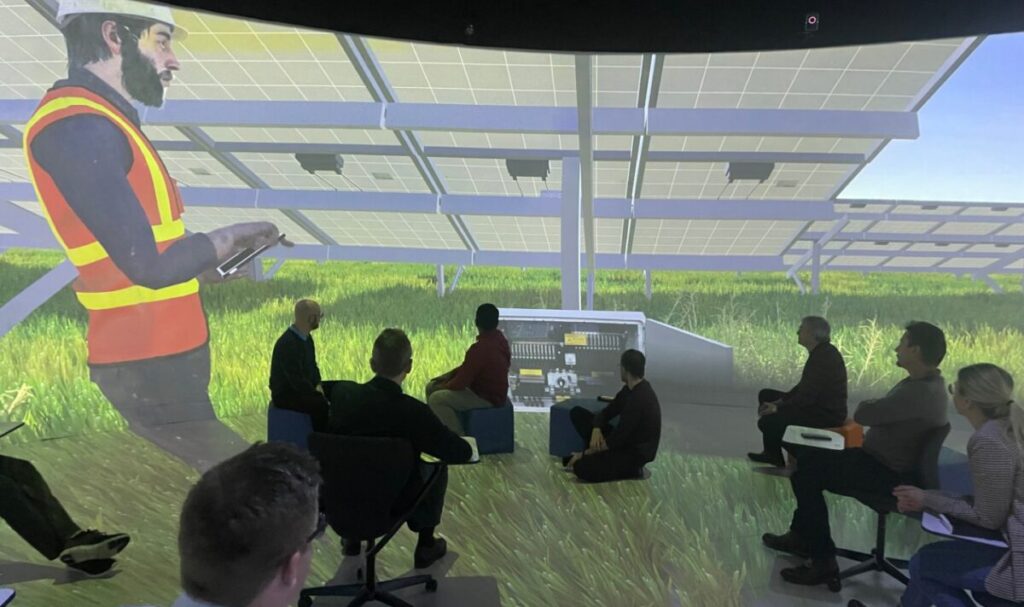https://www.pveurope.eu/agriculture/printable-solar-cells-flexible-and-multiple-uses-existing-space
Flexible and multiple uses of existing space
Printed solar cells such as organic photovoltaics (OPV) or perovskites as the latest semiconductor technology offer great advantages. This is because they enable the multiple use of surfaces, for example on building facades or in the form of agriphotovoltaic systems. The potential for this is great. The integration of such solar solutions in facades alone offers the possibility of installing up to one terawatt of photovoltaic capacity - if only those facades are used that are suitable for this purpose. The situation is similar in agriculture. Covering suitable farmland with printed solar cells enables the installation of three terawatts of output.
Third-generation technologies
With these figures in mind, researchers from the Helmholtz Association, the Jülich Research Centre and the Karlsruhe Institute of Technology (KIT) are embarking on a project that aims to tap precisely this potential. The aim of this envisaged platform, Solar TAP, is to make the new technologies quickly and easily accessible to industry, society and consumers.
See also: Kenya: Solar drying and solar-powered ice production
"In Solar TAP we focus on so-called emerging photovoltaics technologies. These include technologies that stand out from classic silicon and thin-film photovoltaics by relying on synthesised semiconductors," explains Christoph Brabec, Helmholtz Institute Erlangen-Nuremberg for Renewable Energies (HI ERN). "These technologies have been able to dramatically increase their light conversion efficiency over the last five to ten years and have now caught up with silicon."
OPV and perovskites with advantages
He points to the advantages of OPV and perovskites, which can be customised to meet the needs of customers or applications, for example, when it comes to making solar facades attractive in colour or matching the ideal transparency of agri-PV systems for crop growth.
"Organic and perovskite semiconductors have other advantages as well. They are defect-tolerant and can be easily processed out of solution. The solar cells can therefore be printed. This allows cost-effective manufacturing processes with high throughput, even on flexible substrates," adds Eva Unger from the Helmholtz-Zentrum Berlin (HZB).
Making land usable for photovoltaics
But she also explains that the technologies still have room for improvement. But this is only one part of the Solar TAP project. Because the innovation platform wants to use it to develop solutions for photovoltaic applications right away, in order to make areas already used in agriculture, the building sector and transport additionally usable for the expansion of solar energy with solar cells from the printer.
"In order to achieve the German government's goals for the expansion of photovoltaics in the next few years, we will have to massively expand installations in Germany, but also worldwide. In Germany alone, we will have to open up thousands of square kilometres of land for photovoltaics. Conflicts are inevitable. That's why we want to make areas usable for photovoltaics that are already being used for other functions and where photovoltaics brings even more advantages," explains Ulrich Lemmer from KIT.
Advancing development with industrial partners
He sees the greatest potential in agriphotovoltaics. "PV can not only generate electricity here, it can also be used to manage solar radiation or water, as well as protect against erosion and desiccation," he says, describing the additional benefits of these multi-benefit solutions.
Also interesting: Did you miss these other articles on agri-PV?
"Other interesting areas include integration into facades in particular. We can advance technologies for this very quickly and straightforwardly in research and development projects along a roadmap together with our industrial partners."
Printed semiconductors are ideally suited
Solar cells based on printed semiconductors are particularly suitable for this multi-benefit PV, he said. They are easily mouldable, light and flexible and can be freely adapted in terms of colour and transparency. The modules can also be designed in many different shapes and designs - depending on the application requirements. The cells can be applied to materials such as plastic, glass or metal, giving them additional functionality.
Developing real projects
In order to be able to quickly develop these new solar solutions to market maturity, Solar TAP is designed as an open offer to industry. The focus is on technology transfer to a network of companies such as material suppliers, device manufacturers, producers and users who want to establish themselves in the field of multi-benefit PV. Therefore, the scientists do not simply develop in the laboratory. The exchange between science and industry is important to ensure that the developments are related to real projects. (su/mfo)




